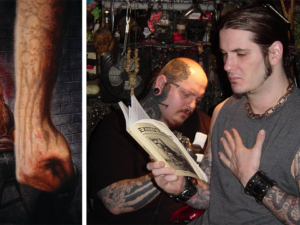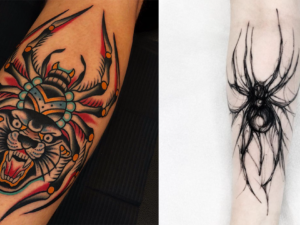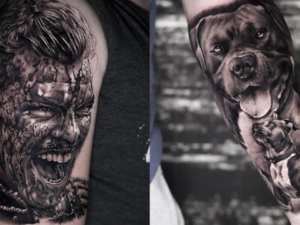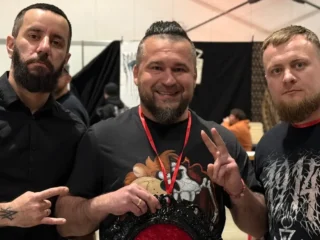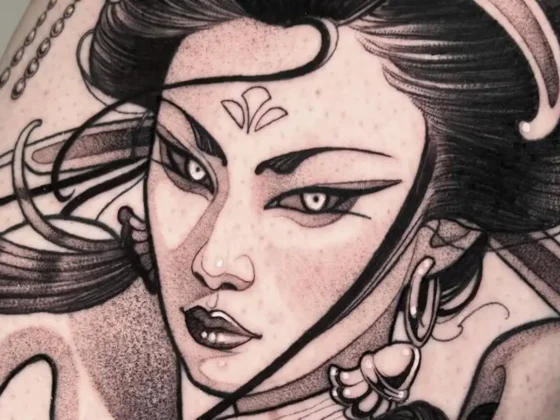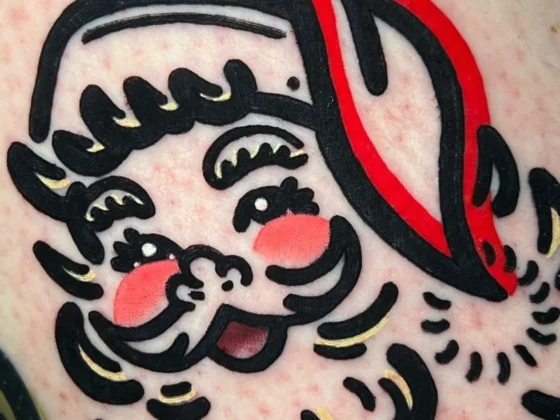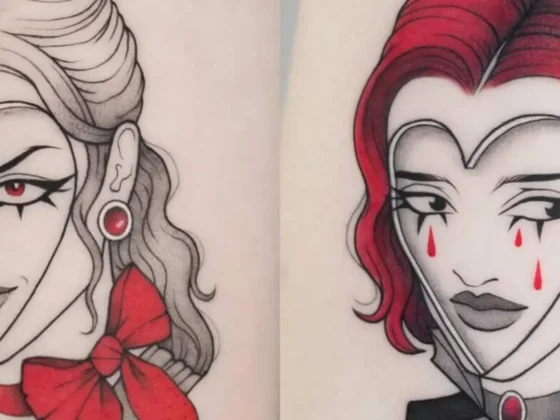Inked Mag
January 22nd, 2019
Confessions of a Color Blind Tattoo Artist
Joel Springer has been in the “color blind closet” for years. He tells INKED about faking his color vision and the one exception makes for tattooing with color now.
Joel “Swift” Springer has been in the “color blind closet” for years. As a tattoo artist breaking into the industry, he felt that there wasn’t any way he could disclose his disablement.

“Not being able to see color was something I’ve always knew I’d have problems with,” Springer said. “When I was younger, I refused to use any crayons that didn’t have the name of the color written on them.”
Springer’s mom took 10-year-old “Swift” to the eye doctor, thinking he needed glasses.

“I took that test with all the different color dots and failed. The doctor then processed to ask me questions. He asked, ‘have you ever gotten into an argument with friends or family over color?’ I told him, ‘I don’t understand what you’re asking.’ He then tells me I am color blind.”
When Springer decided to take up tattooing, he said that no shops in his area wanted him. Then, he decided to teach himself, through tattoo magazines and books.

After self-learning tattooing, from how to put the needle in the tube, to the difference between a round liner and a curved mag, he had eventually moved to Artisanal Tattoo in Somerville, New Jersey.
However, it took a long time of faking his color vision before he got there. Even to his friends.

Only Springer’s brother, parents, and art teachers knew the truth.
“I kept my color blindness a secret for about a year after getting my foot in the door,” Springer said. “I knew that if I brought up that I was color blind, every shop owner would look at me and say, ‘ummm you can’t makes us money, get outta here.’”
By killing every black and grey tattoo that came his way, Springer built the confidence he needed to break free of those color blind chains.

He then posted on social media that he had always been color blind and wouldn’t be doing color tattoos any longer because it took a lot of energy.
“So many people were in disbelief, even to this day, 6 years later,” he said.
“Honestly, I think it felt like I was coming out the closet. You have no idea the amount of sweat that builds up when someone says they want color and you’re stuck in a position that you have to do it,” Springer said. “Stress level was at its highest every time.”

When Springer did administer color tattoos during the time that it was a secret, he said he would “trick the client into telling him the colors he needed to use.”
“It was very hard to master that trick but it worked every time,” Springer said.
“If they said, ‘I would like a blue butterfly, an orange butterfly and a green butterfly’ I would draw up the design and show them the colors I had.”
After Springer would direct the client to his shelf, he would have them physically pick up which “kind of blue you would like for your butterfly.”

Once the client had picked out the colors, Springer said he would pour them into the ink caps and label them at the bottom onto the dental body bib.
Before labelling the “B’s” for Blue and “O’s” for Orange, it was extremely difficult for Springer to guess which color was what.

“There were times when I would have a blue and a purple next to each other, or even a red and orange. I would be joking around with the client and then get so confused on which color was what, and would have to set the inks up all over again.”
Springer talked about the color blind discrimination in the tattoo industry.

“It’s like, if you can’t see shades of color properly then you can’t tattoo period. Not going to lie, I was honestly starting to think that was true,” Springer said. “Thank god I’ve met a few cool, down to earth tattoo artist that explained to me that being color blind only means my brain would focus more on other things, like doing black and grey better than the guys saying ‘if you’re colorblind then you can’t tattoo.’”
For people that want to discredit an artist due to their color vision impairment, Springer says, “Be very careful what you say because that same artist will end up being something special one day.”

“Just because color doesn’t look the same to everyone doesn’t mean that it should keep us back. Art isn’t only about color,” Springer said.
“Yes, it would be awesome if we all could see bright colors the same. but the fun part, and also the most interesting part, is that we are all different in so many ways.”

Springer added that, “We can all learn something from each other.”
“A colorblind person would suck at seeing color, but we can see shades very well. I can tell an amazing color tattoo when I see the shade is consistent and extremely smooth. I might not be able to tell what colors they are but I can definitely see how saturated the tattoo is.”
Now that Springer had built the confidence to let clients know he is color blind, Springer shares that other artists have come to his page, opening up to him about their stories as well.

Although Springer came out of the “color blind closet” six years ago, he says that he still gets asked questions from past clients, potential clients, and other tattoo artists.
“It honestly feels good to answer them. So many clients, especially those that are color blind, come to be because they admire my story,” he said. “If you ever see me do color tattoos today it’s because the client kept asking and would say it would be an honor if they can get a color tattoo by me.”

Springer added, “Even when I tell them it freaks me out to do it, they would say that they understand and would still love to get a color tattoo done by me. That speaks volume.”
Joel “Swift” Springer has a message for other artists with color-vision impairment.

“I want everyone that is color blind, and feel that they can’t be a tattoo artist, to get that thought out of your head,” Springer said. “When you walk into a tattoo shop, make sure that your pencil drawings are good, so that a shop owner will look at them and say that they can see the potential here. Then, explain that you’re color blind.”
“If they don’t accept you, don’t even stress it. Keep knocking on those doors, and as you’re doing that, keep making better drawings, because one day, that one shop will open its doors for you.”

Springer added, “and every single owner that shut that door on you in the past will live to tell that oh-I-knew-that-guy story.”
Editor's Picks
Paul Booth Illustrates Cover for Pantera Graphic Novel
The revered tattoo artist created a cover for a graphic novel celebrating the 30th anniversary of “Vulgar Display of Power”
Scary Spider Tattoos
Spiders are terrifying, yet for some reason people sure do love to get tattoos of them


